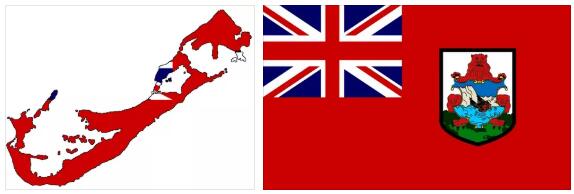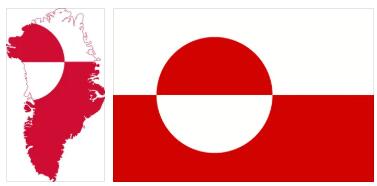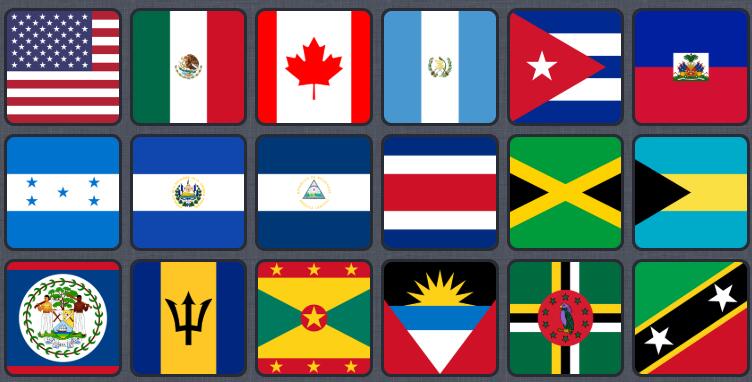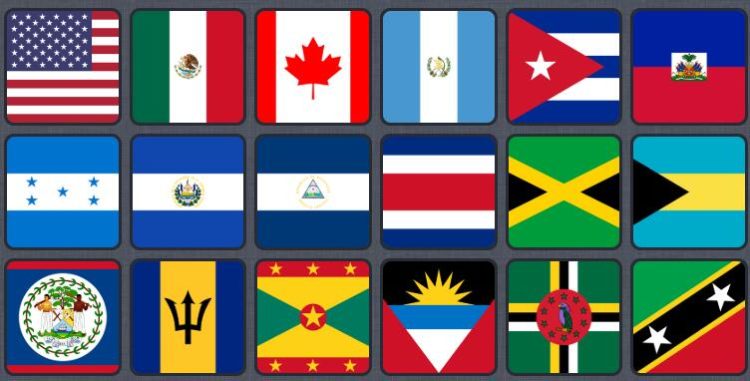North America is one of the world’s seven continents. It is the third largest in area, and the fourth largest in population (513 million residents (2008)).
North American countries
According to countryaah, North America contains 23 nations, the United States, Canada, Mexico, the Central American states and the Caribbean, sometimes Cuba. In addition, there are several territories, including Danish Greenland and English Bermuda.
The United States, Canada and Mexico are by far the largest states in terms of area and population, with the United States as the most populous (about 306 million inv. (2008)) and Canada as the largest in area (the world’s second largest state in 2008).
Bermuda – North America
Bermuda is a state in North America. The capital of the country is Hamilton. About 65,000 people live in Bermuda. Bermuda is one of the most densely populated regions in the world. The official language is English. Bermuda covers an area of around 50 km².

Greenland – North America
Greenland is a self-governing and autonomous part of the Kingdom of Denmark. The country’s capital is Nuuk (Godthåb). Around 56,000 Greenlanders, people of other nationalities, live in Greenland, making Greenland one of the most sparsely populated regions in the world. The official language is Greenlandic. Greenland covers an area of around 2 million km² and is about six times the size of Germany.

Puerto Rico – North America
Puerto Rico is a Free State and a US suburb. The capital of the country is San Juan. About 3.9 million Puerto Ricans and people of other nationalities live in Puerto Rico. Puerto Rico is one of the most densely populated regions in the world. The official languages are Spanish and English. Puerto Rico covers an area of around 9,100 km².

Cayman Islands, UK
Cayman Islands is a British overseas territory in the Caribbean Sea. There are three main islands: Grand Cayman, Little Cayman and Cayman Brac, located about 290 km, northwest of Jamaica. There are 62 thousand residents (2016). The capital is George Town, with 28 thousand residents (2010).
These islands were spotted by Colombo in 1503. Due to the large number of turtles, the Spaniards called them Las Tortugas. Around 1530, the Caymanas indigenous name, derived from a type of marine crocodile existing in those waters, was used to designate the Islands. The first colonizers were the Spanish. The domain was passed to the English by the Treaty of Madrid, of 1670.

British Virgin Islands
The British Virgin Islands are an autonomous British overseas territory, part of the West Indies. The main islands are Tortola, Anegada, Virgin Gorda and Jost van Dyke. There are 35 thousand residents (2017). The capital is Road Town in Tortola.
In the 16th century, the current British Virgin Islands were a Spanish domain. They were colonized by the Dutch in 1648. The English dominated the islands in 1672.
In 2017, these islands were hit by Hurricane Irma.

U.S. Virgin Islands
The United States Virgin Islands (US Virgin Islands) is an unincorporated territory of the United States. There are three main islands: Saint Croix, Saint John and Saint Thomas. There are 107 thousand residents (2017). The capital is Charlotte Amalie, in Saint Thomas.
These islands were colonized by the Danes in the 17th century. The United States bought the Islands in 1917.

Martinique, France
Martinique (Martinique) is an overseas department in France, one of the Antilles. Its relief is mountainous and has active volcanoes. There are 375 thousand residents (2016). The capital is Fort-de-France.
Martinique was sighted by Colombo in 1493. It became a French possession in 1635 and an overseas department in France in 1946.
The geography of North America
North America extends from the Atlantic Ocean in the east to the Pacific Ocean in the west. The northern border is the Northern Arctic Ocean, the Gulf of Mexico is the southeast. In addition, there is a small land bridge to South America. There are also several large islands, not least the archipelago of the Caribbean. The continent is located in the northern and western hemisphere.
North America is intersected by several north-south mountain ranges, where the Rocky Mountains and the Appalachians are the most famous. The climate ranges from permafrost and sub-arctic in Canada and Greenland, to the deserts of the US and Mexico, and the rainforests of Central America.
The religions of North America
The most important religion in North America is Christianity, and is the largest religion in all countries. Here all different churches are represented, but the Protestants are generally strong in Canada and the United States, while Catholicism predominates in the Latin.
In addition, all religions are presented, not least in the United States because of the country’s tradition of great immigration. In the US, Judaism is also an important minority.
North America’s economy
North American countries are economically divided into two distinct groups. Canada and the United States are among the world’s richest and most developed countries, with the United States by far the world’s largest national economy. By contrast, the Caribbean and Central American states are essentially the world’s poorer. The exception is Mexico, which lies between the two extremes and counted to NIC ( Newly Industrialized Countries, emerging countries).
The USA, Canada and Mexico are part of NAFTA, a free trade association. The economy is strongly dominated by the United States, which is one of the world’s leading countries in almost all industries, not least finance, software, defense industry, logistics and services. The financial centers are New York and Chicago.

